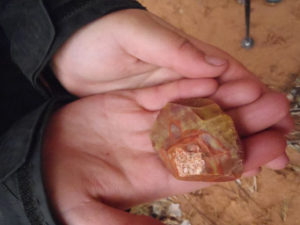 It can seem to the untrained observer that natural history isn’t very relevant in society today. What can a sophisticated urbanite learn from a bunch of plants anyway? Let me tell you, this urbanite has learned a thing or two from them already on this trip. Essential natural history practices can be applied to a realm well outside the backcountry. Vision, attentiveness, and accuracy play key roles in any social system and can improve ones understanding of the world around them.
It can seem to the untrained observer that natural history isn’t very relevant in society today. What can a sophisticated urbanite learn from a bunch of plants anyway? Let me tell you, this urbanite has learned a thing or two from them already on this trip. Essential natural history practices can be applied to a realm well outside the backcountry. Vision, attentiveness, and accuracy play key roles in any social system and can improve ones understanding of the world around them.
Attentiveness has taken much energy throughout this trip. At each step there is something requiring observation and thought. An obvious example is the constant quest for beautiful chert – a type of jagged stone whose hues vary from white to red to purple. My eyes scan the ground for a glint of something unusual, something that calls my attention more than the rest of the rubble. I hone in on a particularly purple piece embedded in the fine sand floor. I lift it from where it lays to inspect it closer. Purple upon first glance – yes – but with more time a gradient develops, then a rainbow, then perhaps a pattern. The color and shape and angles become apparent and distinct. I rotate it in my hand to see all sides, trying to imagine the larger piece it used to be part of. Only by training my attention does it become obvious that this piece has been manipulated by a human hand and ancient tool. A bigger picture begins to show.
Vision is trickier to master than attentiveness. Our wonderful instructor Dave poured water onto some seemingly black moss clinging to a rock face. It turned green! By some miracle of nature, the moss immediately opened itself to the moisture. There were no signs that the moss would react that way but if you new that after a fresh rain most of the mosses were green, you could guess that water triggered this reaction. Natural history is seeing the unseen. Take nothing at face value. Make observations and try to hypothesize based on them. It is extremely important both in ecological and sociological systems to ask questions about what is happening outside of the obvious and examine the components that seem stagnant or simple. You never know what answers may lay there. One can use vision to prepare for future changes and see multiple solutions to current problems.
To balance vision, one must practice accuracy. Hypotheses are only as useful as they are true. By assuming too much, one may make other hypotheses that lack a strong foundation. We were asked to spend two hours with a plant and make speculations based on our thorough observation. I thought my specimen was fairly solitary, standing alone for many yards in any direction. There were a few of its kind on the hill above but I wouldn’t have called it abundant or guessed that it was well adapted to the desert. As I continued to walk down canyon, I saw it everywhere! There hasn’t been a campsite since where I haven’t seen it. The assumptions I made based on the original site did not hold true. This is a perfect example of the necessity of accuracy and the dangers of vision. They need to balance each other.
Attentiveness, vision and accuracy all need to exist in order to come up with clear definition of a problem and to see viable solutions. This is the usefulness of natural history. The same principles that help me make sense of this strange, anything-but-barren landscape can be applied to social systems.